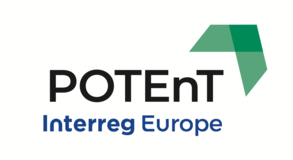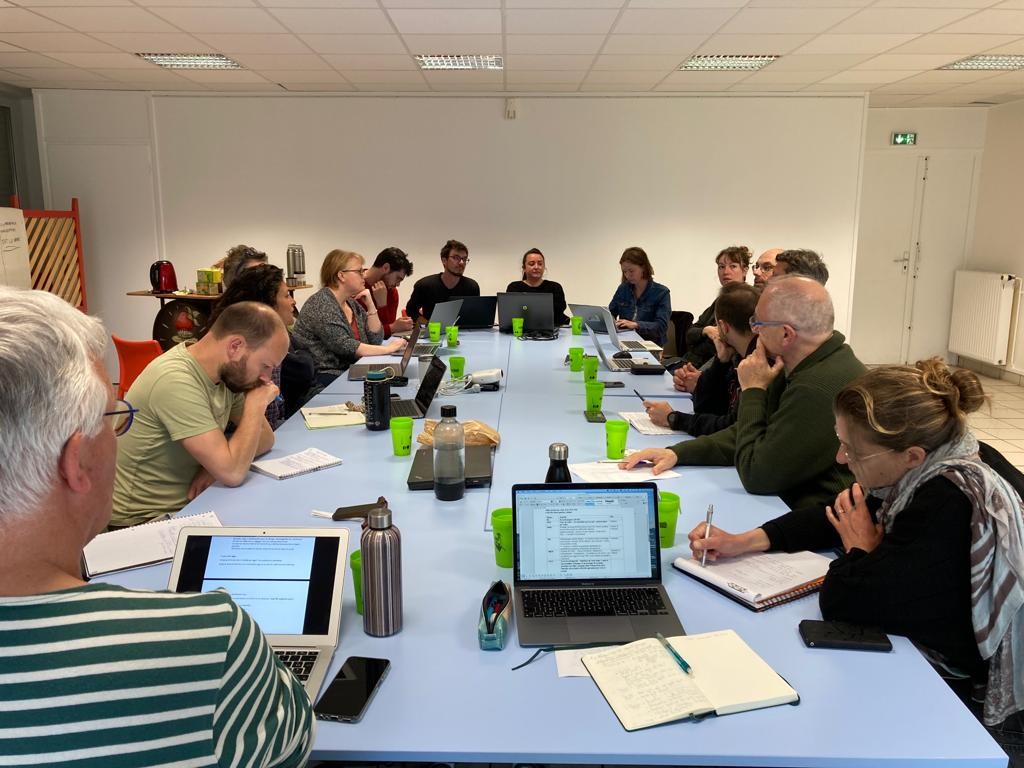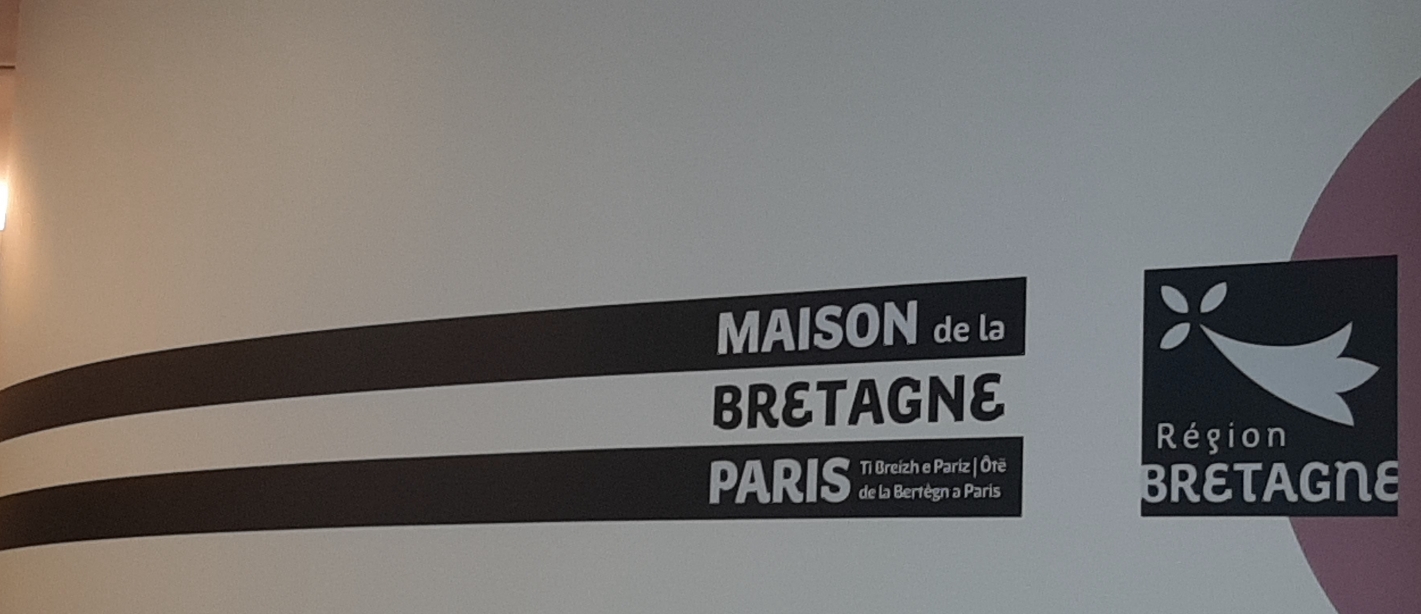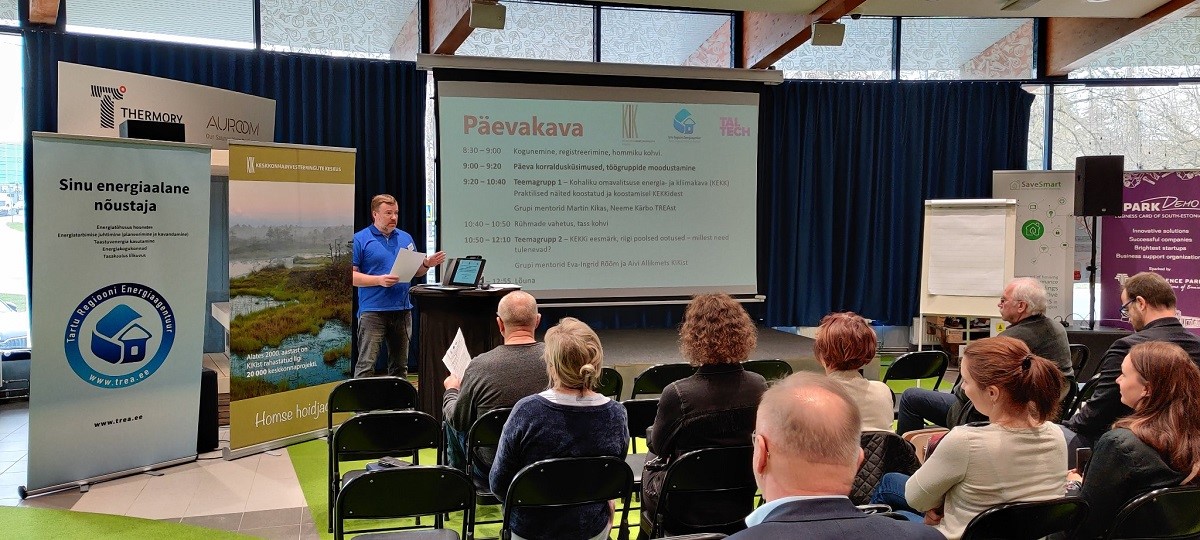On Tuesday 19th January, POTEnT launches its first online study visit. The curiosity and anticipation for this occasion kept increasing during the previous months. However, the event took place (digitally) through an excellent organization.
The protagonist of this study visit was the municipality-owned District Heating Company Växjö Energi (VEAB), that became 100% fossil-free in 2019.
After a quick technical check, our potenters from Vaxjo, Goran Gustavsson and Pierre Stahl, warmly welcomed 25 participants to the meeting. Behind their shoulder, you could see the Swedish landscape, in which snow and forests are predominant, surrounding the VEAB energy plant. Two additional people assisted Pierre and Goran: Julia Ahlrot, Head of Strategy and External Relation and, Peter Johansson, Engineer in charge.

The visit started with a background of Swedish energy production by focusing on its stronger asset: the forest.
Afterwards, we entered in the Vaxjo energy plant, in which we could see how treetops and barks are converted into fossil-free energy. In conclusion, Vaxjo’s ambition to become the ‘’greenest city in Europe’’ was all but hard to understand.
The capability of producing enough renewable electricity to supply half of Vaxjo city and the circularity of the wood-life cycle are remarkable. However, as Julia pointed out, Vaxjo still has some challenges to face, such as the spread of using hydrogen as energy storage, the creation of bio-fuel for planes and the search for a carbon capture model. Nothing is permanent, not even sustainability.
The Swedish case
From 1991 Sweden saw a sharp decrease in carbon emissions coming from the industrial sector due to the establishment of a “carbon tax”. A tax for fossil fuel-based industries, which made RES more competitive. This was a key driver for bioenergy mass production’s transition.

In Sweden, biofuel comes from wood waste such as branches and treetops, sawdust and bark. These materials produce fuel for cogeneration plants and recycled paper in the paper mill. In this circular system, despite wood crucial role for building purposes, forest’s lifecycle is protected: the number of trees harvestable is indeed capped to ensure effective reforestation (30% of the forest untouched).
Subsequently, since 1930 forest growth in Sweden has been greater than the annual cut, which means that wood resource has steadily increased annually. Overall, Swedish energy mix comprehends 55% of RES produced energy, 36% of which from bioenergy.
In 2018, Sweden’s share of RES production was by far the highest in Europe. No surprise that they achieved European CO2 reduction targets years ago.
Towards 2030
Sustainable development at a local level is an intricate net of innovation, decision making and coordination. A strong political commitment is therefore required for a truthful and effective development. This is what pushed Vaxjo municipality to choose the path of becoming the first fossil-fuel-free city in the world by 2030. Thus, from 1988 until now, the city registered a 60% decrease in polluting emissions.
Because of Covid-19, YouTube substituted taxis and shuttle buses, for the sake of our wallets. The videos shown in this visit allowed us to enter the Sandviksverket plant, to watch the wood life cycle and to fly over the Swedish forests. We also got to know Vaxjo’s mayor, who stressed the importance of district heating and district cooling energy production by the bioenergy generation.
This biofuel-based heating district began its expansion in the 1980s. However, special attention to the climate was already present in the municipality horizons.
From the 1970s onward, lakes restoration started by turning polluted lakes into swimmable ones. –They are pleasant and enjoyable in the summer- claims Julia, smiling cunningly.
The system
Gold does not always shine; this is particularly true nowadays. Vaxjo energy showed us how to turn waste into precious fuel for generating renewable energy, then sold on the market.
From the 1980s onward, Vaxjo started the expansion of the DH net all over the city, financed with government subsidies. Now, this extended DH grid manages 50% of the city’s energy consumption.
At the Sandviksverket plant, hot water is stored in the Thermos Flask, a 60 meters tower capable of storing 2,500 MWh, equal to the electricity use of 100 houses for one year. This system is supported by smart grids, which are essential for dynamic control of energy flow, changeable according to weather forecasts.

As the French poet Victor Hugo used to say “The future is a door, the past is a key”. Looking at the past shows us where we are coming from and clarifies present and future. Indeed, looking at Vaxjo’s energy production from 1974 until now, you can see a valuable example of growth and change towards more sustainable development.
Thanks to Energikontor Sydost, now we know: online visits work!







